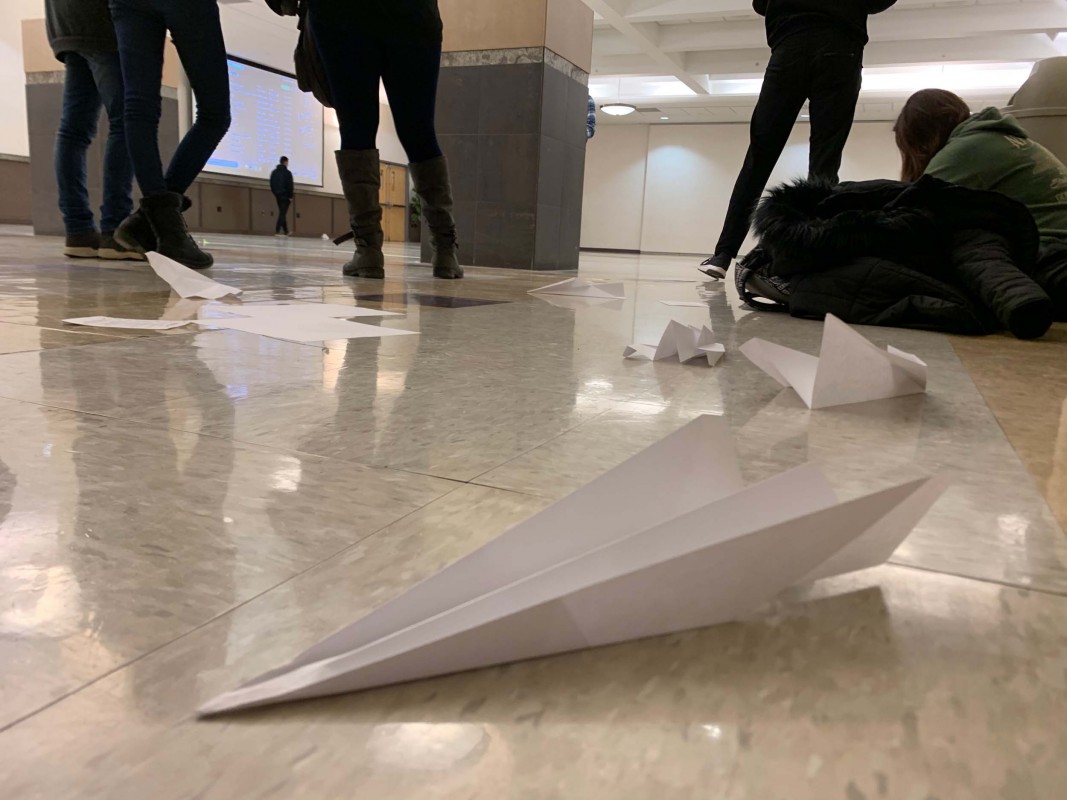Students fly (paper) planes for Engineers Week competition
26 students compete in a three-round showdown

As part of this year’s Engineers Week, Watson Career and Alumni Connections hosted its first-ever paper airplane competition on Wednesday night — and some competitors took their designs to new heights.
The event, held in Old Union Hall, saw 26 students throw their self-made paper planes in a three-round showdown, with many other students cheering from the sidelines.
The rules of the contest were simple: no tape, no cutting, and competitors needed to stand behind a designated starting line while throwing. Outside of that, students could fold any way they wanted. Winners were determined by who could throw their airplane the farthest, and distances were measured from where the plane first hit the ground.
Prizes for first, second and third place included an Amazon Firestick, LED light strips and phone-controlled LED lightbulbs.
The first phase of the competition saw 13 showdowns where two students at a time threw their paper airplanes on the 50-foot throwing area as upbeat pop music played in the background.
The top 50 percent of this round advanced to a semifinal, and from that high-energy round, a top three were chosen.
Throughout each round, a massive Excel spreadsheet was projected onto a screen where students could see live updates on their standings.
In the final round, Andrew Wurtz, a mechanical engineering major, came out on top by throwing his paper airplane 57 feet, 4 inches.
“I just made a paper airplane as thin as I could and threw it as hard as I could,” Wurtz said. “It was the first one I made.”
Second place was Alex Schreiber-Harris (mechanical engineering) at 52 feet, 9 inches; and third place was Liam Flynn (electrical engineering) at 34 feet, 3 inches.
Heriberto Marquez, a graduate student studying biomedical anthropology who was a part of the planning team for the event, said it turned out to be a huge success.
”I think it turned out really, really well for our first year,” he said. “Students were competitive toward the end when it started to get more exciting.”
